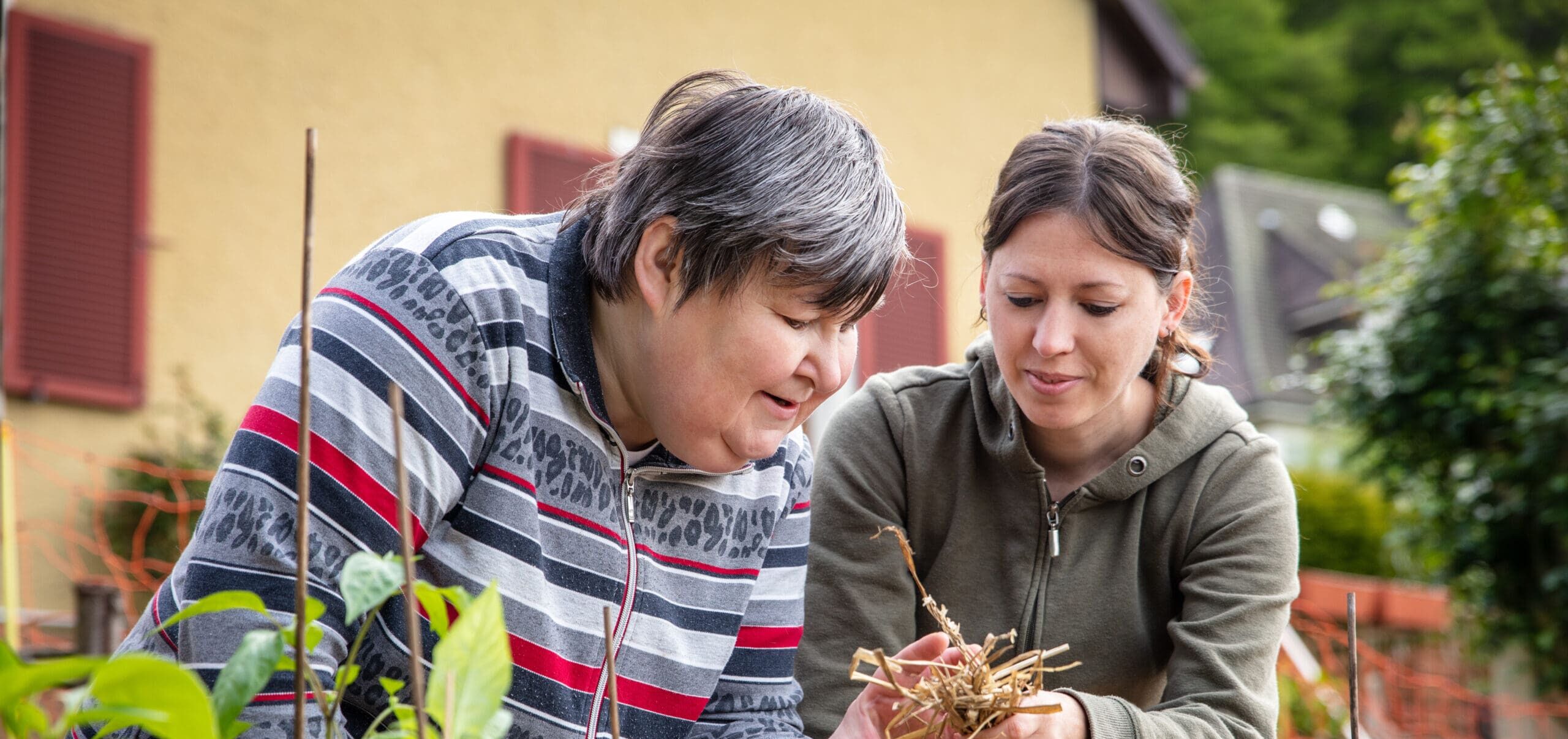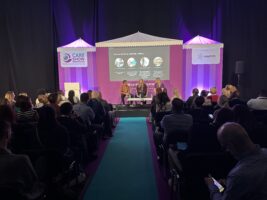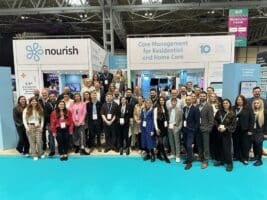Kingsley first opened their doors in 1999, with a care home in Lowestoft Suffolk. Their ethos, ‘a family business caring for residents and staff like members of their own family,’ has guided their incredible growth over the past 25 years.
The Kingsley Vision 2025 builds on that growth, setting out a bright future with a pipeline of next-generation homes coming on stream. Underpinned by a continued commitment to the person-centred focus that defines their care. Fulfilling this vision is an ambitious undertaking and one that requires some substantial changes to their operational practices.
One of the biggest changes they faced was the need for a robust and customisable digital system. One that could adapt to the range of different care services Kingsley provides. While Kingsley has utilised digital software previously, they knew they needed more depth and functionality to support their plans for the future. In Nourish, they found a system that supported their vision, matched their commitment to community and elevated their digital infrastructure.
We spoke to Kingsley’s Director of Specialist Services Chris May and Senior Operations for Specialist Services Joanne Pilbrow to understand what this decision meant for them, their unique considerations in Kingsley Specialist Care Homes, and the importance of keeping people’s experiences central to our understanding of their care.



What were your initial criteria when looking for a digital system?
“It was a company wide decision,” explained Chris May. “Our role was to make sure that what we were looking at as a company would fit for us in the Learning Disability services.
“As it is with many of our services customisability was crucial,” added Joanne Pilbrow. We have a wide range of different people using our services, including those with complex needs. Any care plan system we use needs to be flexible within that. So that was one of the key criteria. We need a system that can be set up for those unique needs.”
Did you feel Nourish satisfied these unique needs?
“It’s not one shoe fits all for care services,” said Joanne. “That’s why the flexibility of platform; the ability to customise, is so important. Some aspects of our care immediately slotted into Nourish, some aspects have required us to customise Nourish to our needs. We’re working with our team and Nourish on this, to make sure the solution wraps around our service. We’re incredibly positive about the developments, though these things take time to take root in our teams.”



How has onboarding your team to Nourish been?
“Once the staff were able to get their hands on it,” said Joanne, “the benefits became clear to them. It’s been a big change. The training that we received at the higher end was fantastic. However, it’s taken time for staff to see that change and the difference it makes.
“Initially we weren’t collecting the data we needed. We knew we needed to sit down with the system and our teams and work it out. After spending some time with the system our teams are starting to understand what we want to do with our data. Things like, where it goes, how it links to plans and the benefits we receive. It takes a bit of time to build that kind of data integrity. It’s in the motions, and that has come along with the staff becoming more involved and learning to embrace Nourish. We are already seeing the positives. We’re capturing so much more information now, and the quality of the information is a lot better.”



Have you and your team felt supported during the transition to Nourish?
“The support has been excellent,” said Joanne. “I know managers throughout our services are relying on your support. They are able to ask and get feedback on a specific question easily through the support chat.
“Clearly it’s a positive experience, and they’re getting the information they need in a timely manner. I haven’t heard anything negative about the experience.”
“And trust us if the managers weren’t happy we would know!” added Chris.
“The fact is we’re not getting those questions ourselves, because our managers have that access to support,” continued Joanne. “It clearly shows that the support is effective. I know other kinds of support we’ve had previously; you’d ask a question, and you’d get a standard answer back that doesn’t answer the question at all. Whereas the support from Nourish has been really good.”
How does Nourish support the specificity of Kingsley’s care?
“The accessibility of our data is really good since changing over our systems,” said Joanne. “It’s great to have the data at your fingertips and those snapshots of your care. To be able to drill through reports to get that information. My mind was blown on the reporting, it took me a little time to get my head around the reporting but I soon worked out ‘this is the data I want’. It’s very helpful, and you get exactly what you want from it. Which is a lot different to the system we had previously.



“It’s also brilliant from a governance and compliance point of view. We’re able to analyse all our data and see it as it is. You can triangulate between different things such as the care plans, interactions and trends, which is helpful.
“Plus, we’re seeing improvements in that data too, and how we’re capturing it. Thanks to the reports we can now generate, we can do targeted training, targeted development with individuals and the services to drive business wide data quality improvement. Which is incredibly beneficial. We’re able to address the positives and negatives and shape what we want to see. And it can be widespread organisationally or targeted for individual users.”
Can you give us a detailed example of how Nourish supports your focus on specificity?
“Absolutely,” said Joanne. “Weight and nutrition is something that is a key topic for a lot of regulating authorities at the moment. We do a monthly weight analysis, to check people aren’t losing and gaining unhealthily. On that dashboard in Nourish we can see our percentage of individuals in each home that are either obese, underweight or overweight. Nourish gives us a clear picture and it was quite eye opening. It caused a change in our point of view and focus, to see how we can address what we were seeing and what’s going on across the organisation. To see that on a dashboard and framed in different ways, both as an organization, and in our smaller, more individualised homes, we’re able to really key in on that information to respond.”
“The benefits are felt in loads of places, like our ABC and Incident Reporting. We’ve done a lot of educating on how we want staff to pull that information in. As a result, we’re able to see that difference in the data coming through. And because we can download the whole lot of it all in one hit, we can see what the entries are. We can see all that data, who’s done what etc. We can then provide targeted development and show that we can see people are really changing the way they record data.”
How does our Mobile App help your staff capture the right data?
“The staff find it a lot easier now we’ve done the migration and they understand what information they’re looking to capture,” said Joanne. ”What I like a lot about it is that you get prompts on important questions. If I’m putting a note in for breakfast it’s asking me relevant questions. What has the person eaten? What choices have I given? It gives the staff prompts on how that that data needs to be filled in. I think that’s why we’re getting so much more data, because the app is so user friendly. As opposed to the short notes of the past like ‘I gave Bob breakfast’. That’s not helpful, and we do still see that in bits. But now it’s much more common to see notes like ‘I gave Bob breakfast, he had two Weetabix. I offered him Weetabix, or Coco Pops. He ate it all.’ Because those prompts are there, that data is so much bigger. It’s so much better data quality than what we were seeing before.
“I am someone who was averse to change. I don’t like change. We liked what we had before, but now I see the benefits of our new system. We’re able to work with Nourish to customise the system to our service. We couldn’t do that with the previous system. It was very rigid.”



Does this new approach promote co-production with the people who rely on Kingsley?
“Oh definitely,” said Joanne, “especially in the sense that the accessibility on devices is quite good. It’s visual so we’re able to involve people more when possible. We can capture point of care data with them, and we can show them what’s being recorded. The people we’re providing care for are able to understand what we’re recording due to the visuals on Nourish. We don’t have too many people where that is necessarily appropriate, but for the few that we it is appropriate to involve them, that accessibility is invaluable.”
How has Nourish helped your prepare for regulatory inspections?
“We haven’t had a regulatory inspection since joining Nourish,” said Joanne, “but the Local Authority conducted a quality monitoring visit in one of our homes recently. They were quite welcoming of Nourish. They said it was better than what we had before and they were quite positive.”
How do you feel about your future with Nourish?
“I definitely think it’s very positive,” said Joanne. “It’s just about getting our heads around how the system works and how that can work for us. We’re definitely becoming more fluid with Nourish over time.”
“Yeah, I agree,” added Chris, “and I think we’ll get much better at using it properly. We are learning as we go and getting more out of it. I definitely think joining Nourish was the right thing to do.”








